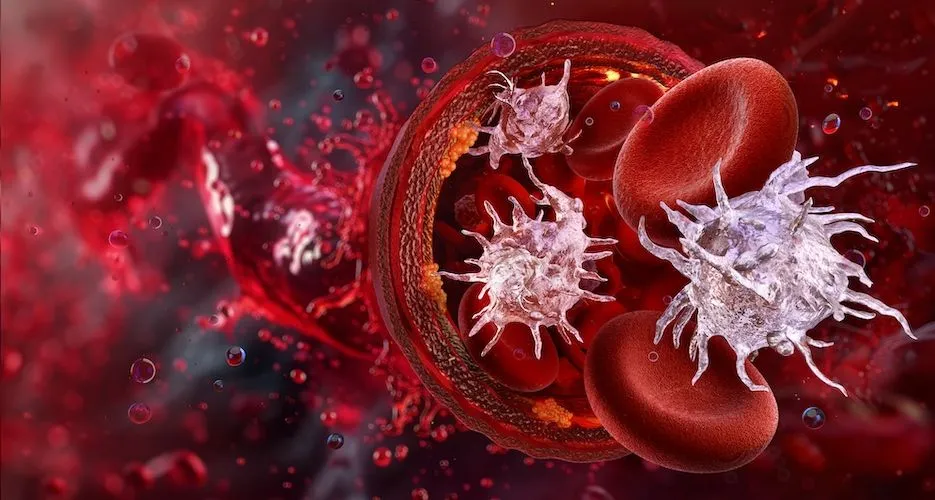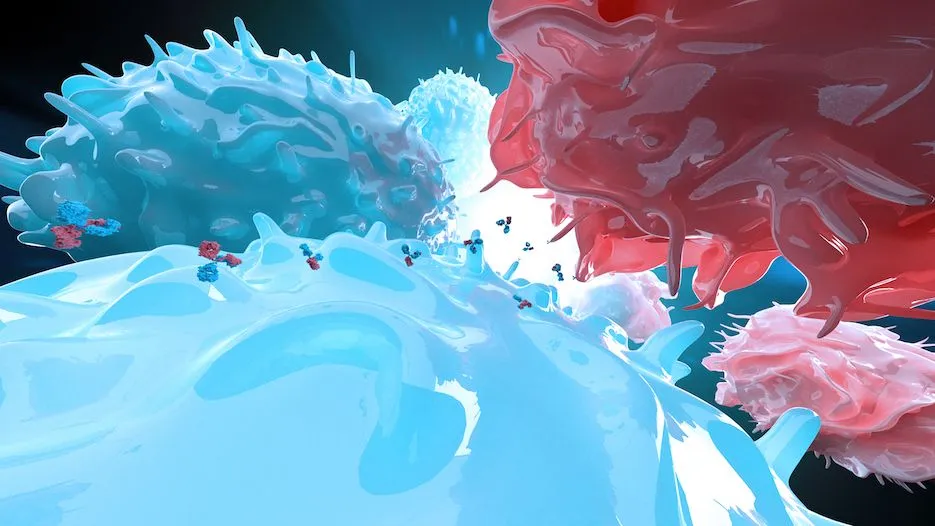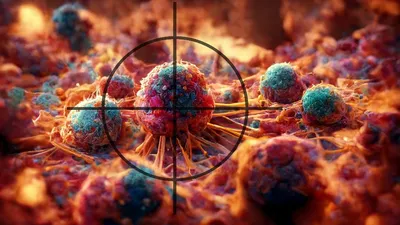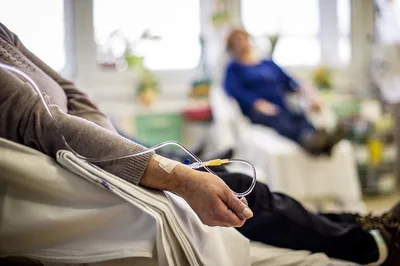Non-Hodgkin Lymphoma: Understanding Your Diagnosis (Aggressive vs. Indolent)
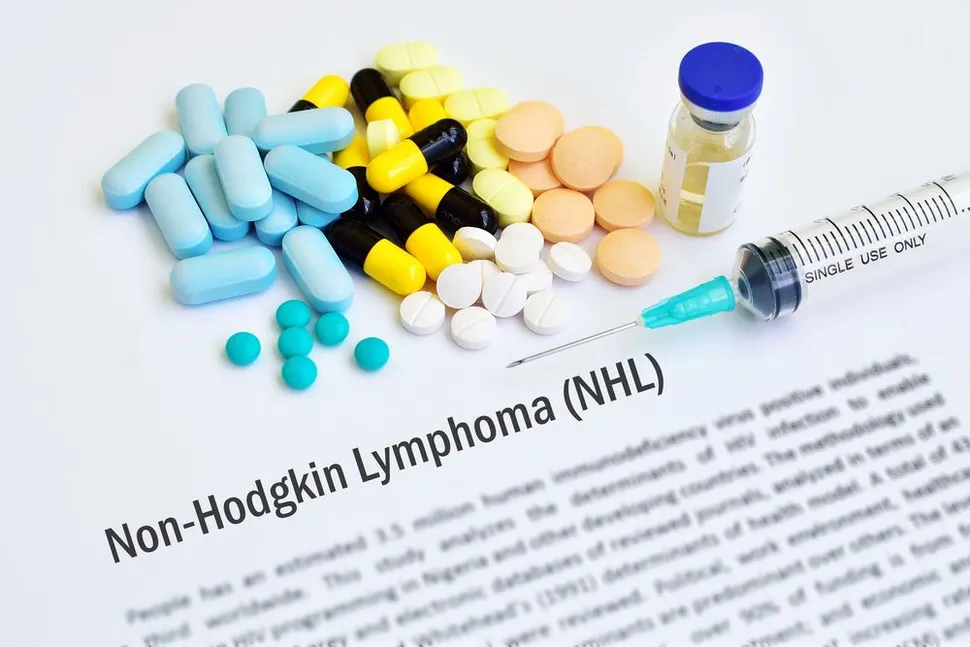
Lymphoma is a form of cancer that affects lymphocytes, a type of white blood cell. In patients with lymphoma, malignant (cancer) cells form in the lymph system. There are two main types of lymphoma: Hodgkin lymphoma and non-Hodgkin lymphoma (NHL).
What is Non-Hodgkin Lymphoma?
NHL is the most common type of lymphoma. The main difference between Hodgkin lymphoma and NHL is the type of lymphocytes affected. Patients are generally older when diagnosed with NHL compared with Hodgkin lymphoma, with the majority of patients aged over 55 years at diagnosis. Additionally, NHL can occur in lymph nodes anywhere in the body, while Hodgkin lymphoma usually arises in the upper body.
NHL can be further subdivided based on whether it grows and spreads quickly (aggressive) or slowly (indolent). Indolent lymphoma tends to have few signs and symptoms, whereas the signs and symptoms of aggressive lymphoma can be severe. The treatments for aggressive and indolent NHL are different.
Aggressive NHLs include:
- Diffuse large B-cell lymphoma
- Follicular large cell lymphoma, stage III
- Anaplastic large-cell lymphoma
- Extranodal natural killer-/T-cell lymphoma
- Lymphomatoid granulomatosis
- Angioimmunoblastic T-cell lymphoma
- Peripheral T-cell lymphoma
- Intravascular large B-cell lymphoma/intravascular lymphomatosis
- Burkitt lymphoma/noncleaved-cell lymphoma
- Lymphoblastic lymphoma
- T-cell leukemia/lymphoma
- Mantle cell lymphoma
- Post-transplant lymphoproliferative disorder
- True histiocytic lymphoma
- Primary effusion lymphoma
- Plasmablastic lymphoma
Indolent NHLs include:
- Follicular lymphoma
- Lymphoplasmacytic lymphoma/Waldenström macroglobulinemia
- Marginal zone lymphoma
- Primary cutaneous anaplastic large cell lymphoma
NHL can also be categorized based on whether B-cells, T-cells, or natural killer cells are involved.
What is Diffuse large B-cell lymphoma?
Diffuse large B-cell lymphoma (DLBCL) is the most common type of non-Hodgkin lymphoma in adults, accounting for about 3 out of every 10 cases. It is an aggressive, fast-growing lymphoma that can arise in lymph nodes or outside of the lymphatic system, in the gastrointestinal tract, testes, thyroid, skin, breast, bone, or brain.
DLBCL originates in mature B cells, which are white blood cells that produce antibodies. Normally, these B cells create antibodies to combat invading bacteria, viruses, and toxins. However, in DLBCL, these cells enlarge and proliferate uncontrollably, leading to tumor formation.
The term "diffuse" refers to the spread of this type of lymphoma, affecting multiple locations in the body rather than being contained in one area.
Key takeaways
- NHL is a type of cancer where malignant cells form in the lymph system
- NHL can grow and spread quickly (aggressive) or slowly (indolent)
- Diffuse Large B-cell lymphoma is a B-cell, aggressive type of NHL
Sign up for our newsletter to continue learning about DLBCL, stay up-to-date with the latest treatment developments, and register for our upcoming educational events!
SUBSCRIBE TO HEALTHTREE FOR DLBCL NEWSLETTER
Sources:
Lymphoma is a form of cancer that affects lymphocytes, a type of white blood cell. In patients with lymphoma, malignant (cancer) cells form in the lymph system. There are two main types of lymphoma: Hodgkin lymphoma and non-Hodgkin lymphoma (NHL).
What is Non-Hodgkin Lymphoma?
NHL is the most common type of lymphoma. The main difference between Hodgkin lymphoma and NHL is the type of lymphocytes affected. Patients are generally older when diagnosed with NHL compared with Hodgkin lymphoma, with the majority of patients aged over 55 years at diagnosis. Additionally, NHL can occur in lymph nodes anywhere in the body, while Hodgkin lymphoma usually arises in the upper body.
NHL can be further subdivided based on whether it grows and spreads quickly (aggressive) or slowly (indolent). Indolent lymphoma tends to have few signs and symptoms, whereas the signs and symptoms of aggressive lymphoma can be severe. The treatments for aggressive and indolent NHL are different.
Aggressive NHLs include:
- Diffuse large B-cell lymphoma
- Follicular large cell lymphoma, stage III
- Anaplastic large-cell lymphoma
- Extranodal natural killer-/T-cell lymphoma
- Lymphomatoid granulomatosis
- Angioimmunoblastic T-cell lymphoma
- Peripheral T-cell lymphoma
- Intravascular large B-cell lymphoma/intravascular lymphomatosis
- Burkitt lymphoma/noncleaved-cell lymphoma
- Lymphoblastic lymphoma
- T-cell leukemia/lymphoma
- Mantle cell lymphoma
- Post-transplant lymphoproliferative disorder
- True histiocytic lymphoma
- Primary effusion lymphoma
- Plasmablastic lymphoma
Indolent NHLs include:
- Follicular lymphoma
- Lymphoplasmacytic lymphoma/Waldenström macroglobulinemia
- Marginal zone lymphoma
- Primary cutaneous anaplastic large cell lymphoma
NHL can also be categorized based on whether B-cells, T-cells, or natural killer cells are involved.
What is Diffuse large B-cell lymphoma?
Diffuse large B-cell lymphoma (DLBCL) is the most common type of non-Hodgkin lymphoma in adults, accounting for about 3 out of every 10 cases. It is an aggressive, fast-growing lymphoma that can arise in lymph nodes or outside of the lymphatic system, in the gastrointestinal tract, testes, thyroid, skin, breast, bone, or brain.
DLBCL originates in mature B cells, which are white blood cells that produce antibodies. Normally, these B cells create antibodies to combat invading bacteria, viruses, and toxins. However, in DLBCL, these cells enlarge and proliferate uncontrollably, leading to tumor formation.
The term "diffuse" refers to the spread of this type of lymphoma, affecting multiple locations in the body rather than being contained in one area.
Key takeaways
- NHL is a type of cancer where malignant cells form in the lymph system
- NHL can grow and spread quickly (aggressive) or slowly (indolent)
- Diffuse Large B-cell lymphoma is a B-cell, aggressive type of NHL
Sign up for our newsletter to continue learning about DLBCL, stay up-to-date with the latest treatment developments, and register for our upcoming educational events!
SUBSCRIBE TO HEALTHTREE FOR DLBCL NEWSLETTER
Sources:

about the author
Dylan Barrett
Dylan is a freelance medical writer based in Cork, Ireland. He previously worked in independent medical education while living in London and is now collaborating with HealthTree to develop resources for blood cancer patients. His background is in genetics, and he has a passion for innovative scientific research. In his spare time, he enjoys sports, traveling, and spending time with his family and friends.
More on Core Education
Trending Articles
Get the latest thought leadership on your Lymphoma delivered straight to your inbox
Subscribe to the weekly newsletter for news, stories, clinical trial updates, and helpful resources and events with cancer experts.
